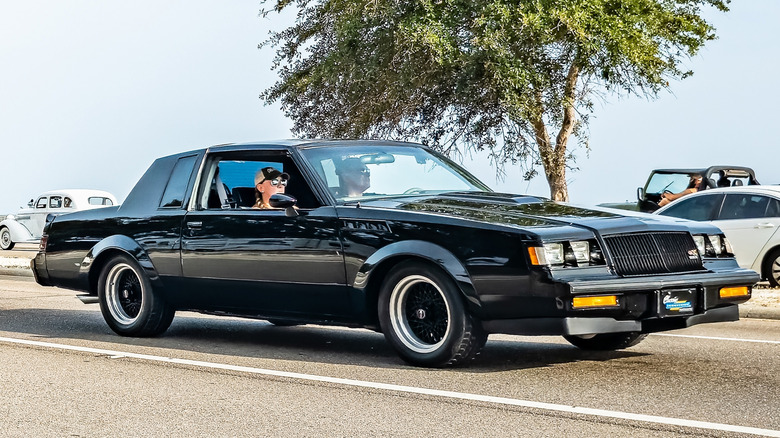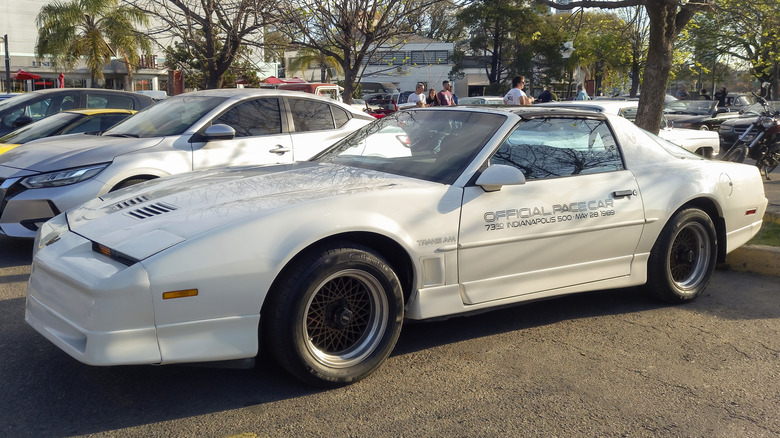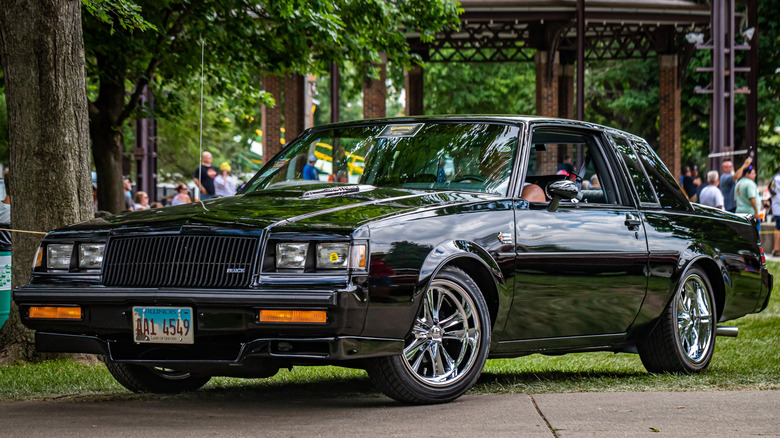What Is The Pontiac Equivalent Of The Buick GNX?
The Buick Grand National Experiment, or the GNX for short, was a limited edition model from Buick that was released in 1987. The GNX traces its origins to the intensified efforts of the company during the 1980s to create the ultimate version of one of their best-selling models: The Buick Regal, its championship-winning contender in the NASCAR championships of the period.
In the early 70's, Buick began research for a new car to join its lineup, termed as a personal luxury car. By 1973, Buick launched its first-generation luxury coupe — the Century Regal Hardtop Coupe. Three years later in 1981, the Buick Century Regal — now called just the Regal — entered NASCAR with the Junior Johnson team and won back-to-back championships, driven by Darrell Waltrip. Encouraged by racing success and wanting to boost its image as a youthful, sporty brand, the first evolution of the Regal came with the release of Buick's first limited production and high-spec car: The Regal Grand National, unveiled during the 1982 Daytona 500.
In the succeeding years, more development on the Grand National was made, including the installation of a new turbo V6 engine and an intercooler that contributed to a higher power rating and torque for the car. By 1987, the Grand National — now called the GNX — was released. With its final version, the GNX became the fastest production car in the world, and had more horsepower and torque than the contemporary Corvette of the time.
The Trans-Am borrowed Buick's powerplant for the Trans Am
In 1989, General Motors had an upcoming milestone for its other brand when the Pontiac Trans-Am celebrated its 20th anniversary. During the same period, NASCAR was also going to run the 73rd Indianapolis 500, and Pontiac was given the task of providing the pace car for the race. Given this responsibility, Pontiac understood the opportunity to showcase its new model and quickly began work on a special edition Trans-Am. Initially planning to create an all-new aluminum V8 for the Trans-Am, time and budgetary constraints forced Pontiac to look for an alternative. Pontiac decided that the engine from its colleagues at Buick would be a great fit.
While the Buick GNX was already old at this point, its astounding engine was still the most powerful available, and Pontiac decided to use its proven turbocharged V6 powerplant for the new Trans-Am. While a good idea, several challenges made the transplant difficult. Its smaller engine bay meant several changes needed to be made, including borrowing parts from other pistons and cylinder heads from its group parts catalog.
Seemingly a mish-mash of parts, the resulting engine performed great for Pontiac. So good, in fact, that Pontiac had to underrate the engine from 300 horsepower to only 250 horsepower, so as not to directly compete or overshadow General Motors' halo car, the Corvette.
Good (fast) things come in two's
Having been created with the intent of producing the ultimate versions of each model line, both the Buick GNX and the Pontiac 20th Anniversary Trans-Am succeeded in their goals, and were considered to be some of the best examples of muscle cars from their respective eras. Benefiting from shared technology and engineering under General Motors, both cars achieved records when it was the quickest production car on its release.
Despite sharing parts and coming from the same conglomerate, the two cars were also markedly different. The design language for the Trans-Am is markedly more aerodynamic than the boxy styling of the GNX, and it featured a more modern cabin, including plush seats and modern instrument clusters. A further distinction between the cars is seen by the colors they first came with, with the GNX easily identified by its black, Darth Vader look; and the Trans-Am sporting a white finish for its NASCAR debut.
Today, Buick no longer produces the Regal or Grand National, with the Regal being discontinued after the 2020 model year. Like many automakers in the U.S. today, Buick has reoriented its market position by changing its model lineup which is now composed of SUV's and Crossovers. The Pontiac brand itself has been shut down: Its last year of operation was back in 2010, with General Motors citing low sales and financial difficulties as the reason for its closure.
Despite these setbacks, the legacy left behind by the GNX and the 20th-anniversary Trans-Am live on. Each has achieved collector status primarily because of their low production numbers: 547 units for the GNX, and 1,555 units for the Trans-Am, in addition to their historical and performance value.


